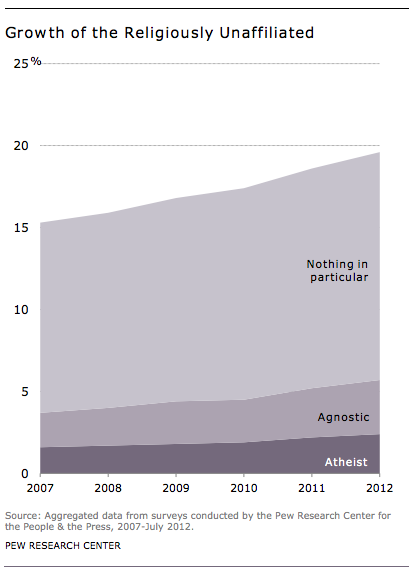Via Hemant Mehta
A new study by Pew Forum (based on 2010) data shows that religiously unaffiliated make up 16.3% of the world population. That is compared to 31.5% Christians and 23.2% Muslims.
The unaffiliated are heterogeneous is their beliefs, and that depends to a great extent on where they live:
For example, belief in God or a higher power is shared by 7% of Chinese unaffiliated adults, 30% of French unaffiliated adults and 68% of unaffiliated U.S. adults. Some of the unaffiliated also engage in certain kinds of religious practices. For example, 7% of unaffiliated adults in France and 2 7% of those in the United States say they attend religious serv ices at least once a year. And in China, 44% of unaffiliated adults say they have worshiped at a graveside or tomb in the past year.
To what extend attending service is based on creed versus a purely social function is not clear.
According to an earlier study, atheists and agnostics together make up about a third of the unaffiliated in the US.
Religiously unaffiliated Americans are comprised of three discrete subgroups, which have distinct religious and demographic profiles:
- “Unattached believers” (23%): describe themselves as religious despite having no formal religious identity, and are more likely than the general population to be black or Hispanic and to have lower levels of educational attainment;
- “Seculars” (39%): describe themselves as secular or not religious, and roughly mirror the general population in terms of racial composition and levels of educational attainment;
- “Atheists and agnostics” (36%): identify as atheist or agnostic, and are more likely than the general population to be non-Hispanic white and to have significantly higher levels of educational attainment.
So next time someone asks you about your unaffiliated status, you can tell them you belong to a heterogeneous group that forms 20% of the US population and 16% of world population.


